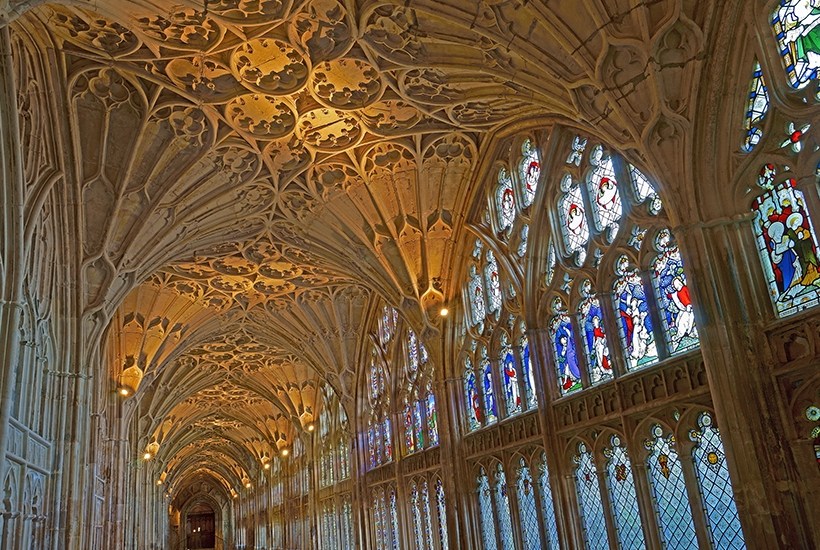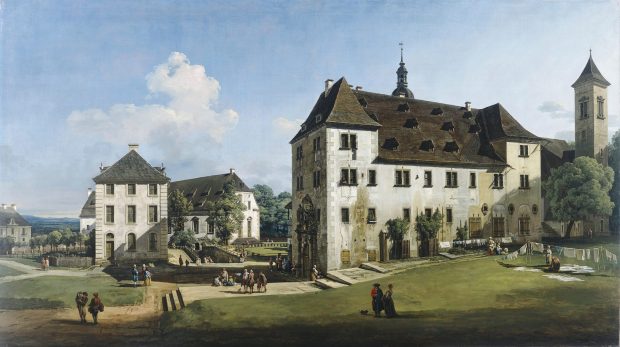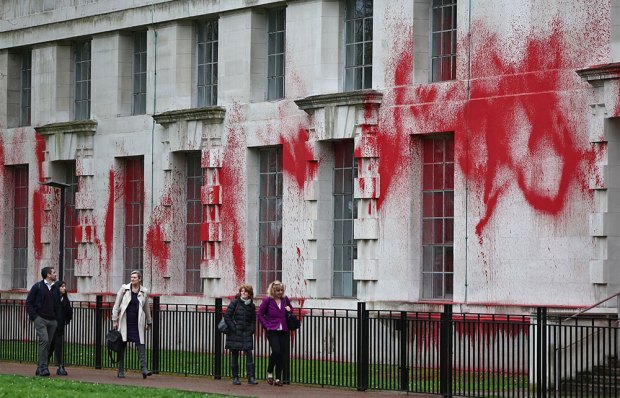Press officers, breathe easy. This is not another column attacking the National Trust. Actually, I tell a lie. It is. But my complaint isn’t bullying or slavery or LGBTQ+ery or even chocolate Easter eggery. It is more single and specific: the National Trust does not speak architecture. Or if it does, it’s keeping shtum.
Since the great May reopening, I’ve dragged my husband around half a dozen National Trust properties, landscapes and gardens (he hardly ever protests, always pays for tea). We’ve done Stourhead, Oxburgh, Ickworth, Lacock, Cobham Woods and Disraeli’s Hughenden Manor. In the gap between lockdowns last year, we did Sissinghurst and Knole.
I cannot fault the car parks, the rhododendrons or the second-hand bookshop in the Oxburgh potting shed. The volunteers are as charming a collection of people as you could ever hope to meet. Pick any property, pick any parterre and the woman on the door and the man by the greenhouse will be kind, knowledgeable and keen as English mustard. Speaking of which: the tea rooms are universally dreary. Come on, chaps. In the era of sourdough, you can’t go on serving stale scones and flabby flapjacks.
Pelargoniums are clearly labelled, trees identified and tagged. But we hunted high and low for information on windows, follies and cloisters, and answer came there none.
When I say that the National Trust doesn’t speak architecture, I mean speak. Architecture is a language. It has grammar and vocabulary and like all languages it has to be learnt. My A-level history of art teacher used to give us temple tests: a print-out of a classical portico and ten minutes to label as many bits as we could. Triglyph, metope, guttae, fascia, astragal, flute, scotia, fillet, torus…
At Lacock I stood with a friend — we met doing the same university special subject on 18th-century British architecture — trying to remember what those bull’s head thingies on the frieze were called. We asked the room guide. ‘Ooh,’ he said. ‘I don’t know. We ought to have a sign or something saying what everything is.’ Indeed you ought.
Pack your Pevsner, bring your Rice’s Architectural Primer, buy the book in the gift shop at the beginning, not the end of your trip. Because there’ll be little of use along on the way. At Stourhead we walked a great panoramic loop of grottos, temples and gothick cottages searching in vain for a scrap of information about Palladio, the Pantheon or the picturesque. Just a lot of guff about ‘Where do you find peace?’, reminders to ‘Breathe’ and some awful wildflower doggerel. ‘Buttercups have honeyed hearts/ Bees they love the clover/ But I love the daisies dance/ All the meadow over.’ A ducking in the lake for whoever wrote that.
If the National Trust wants to be the National Health Trust and fill its boards with wellbeing wibble and assorted nature-cure nostrums, fine. There’s an audience for that. But there’s a good contingent of us, pasty, sedentary, cornice-fetishists, who actually want to know about jetties and nogging and spandrels and studding. Now, I know, I know because I’ve met them, that the National Trust is riddled, like woodworm through an antique beam, with curators, conservators and architectural enthusiasts just dying to tell you about string courses and clasping buttresses. The Trust should clasp them to its bosom, not murmur about ‘restructuring’. Firing, for those who don’t speak that particular corporate dialect.
My husband, catching me scrolling slack-jawed through Instagram, will piously repeat the slogan of the Duolingo app: ‘Fifteen minutes a day can teach you a language. What can 15 minutes of Instagram do?’ So, he’s learning Polish and French, but can he tell his acroterion from his anthemion? If my tech skills weren’t stuck somewhere around Ancient Greece, I might design an app, let’s call it Archolingo, to identify and teach all the bits of a building. I don’t suppose it would make me as much money, as say, Bumble. But what price public service?
You used at least to be able to count on churches to pick up the National Trust slack. But since Covid, many have removed their damp but informative pamphlets. While I can well believe you can catch a virus from an unmasked yobbo on the Tube, exactly how many recorded cases have there been of day-trippers coming down with so much as a cold from a pile of church guides by the font?
On the one hot weekend in July, my mum and I found ourselves near St Nicholas, Old Marston, just outside Oxford. We rested in the cool of the nave. No shortage of Covid information posters, but otherwise silence in — and about — the pews. Three cheers for 3G which got me on to the website of Historic England and the poetry of cambered tie beams and moulded purlins, cinquefoil lights and carved square stops. Some churches, I should add in the interest of fairness, have doughtily gone on laying out their leaflets and they deserve every one of those offertory box 50ps.
It’s too easy to say schools should teach architectural history. The last time I looked schools were supposed to be teaching civics, ethics, diversity, personal and social responsibility, climate-change, fourth-wave feminism, post-racial theory, online safety, sexual consent and in one recent positive development, Latin. All in isolation and on Zoom. Just time left over for one of the three Rs, but probably not for architecture. Which leaves students of the nation’s heritage in the permanently wringing hands of the National Trust and the Church of England. God help them.
Incidentally, I looked the bull’s heads up later in Rice’s Primer. Bucrania, if you want to know.
Got something to add? Join the discussion and comment below.
Get 10 issues for just $10
Subscribe to The Spectator Australia today for the next 10 magazine issues, plus full online access, for just $10.
You might disagree with half of it, but you’ll enjoy reading all of it. Try your first month for free, then just $2 a week for the remainder of your first year.















Comments
Don't miss out
Join the conversation with other Spectator Australia readers. Subscribe to leave a comment.
SUBSCRIBEAlready a subscriber? Log in